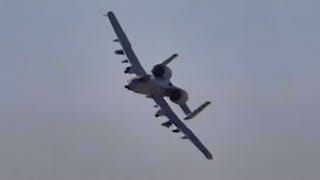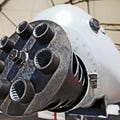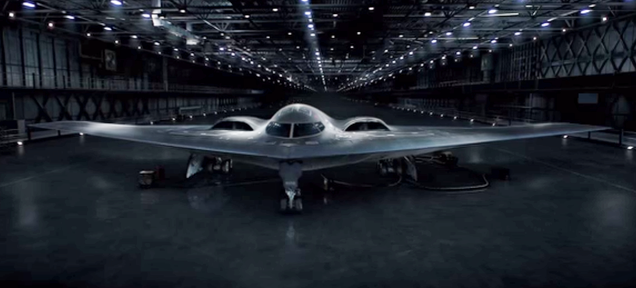
How many American consumers are looking to purchase a new long-range stealth super-bomber? None. So why would Northrop Grumman spend big bucks on producing such a glitzy ad and pay to have it run in Washington DC and Dayton, Ohio during the Super Bowl? Defense contractors have learned a thing or two from Steve Jobs.
The Long Life Cycle Problem
Outside some of the commodities markets, there are few industries bigger when it comes to individual deals than the arms trade, especially when it comes to the high-tech, 'bleeding edge' programs put forward by the U.S. Department of Defense. A single contract for an aircraft, tank or ship class can mean tens, and even hundreds of billions of dollars in revenue, and much more in the future when it comes to sustaining that weapons system and upgrading it to keep it viable over time.
The stakes for winning a 'banner' defense contract are not high, they are almost unfathomable.
This is especially true in today's fiscal and technological climate. In the 1950s, a fighter jet design could be retired in less than ten years of it entering active service. Over time, that lifespan has lengthened almost laughably. Today, we have front line fighter aircraft approaching 40 years old with no replacements on the horizon in the near term, and often the bigger they are, the older they are. Systems, like the B-52 Stratofortress and KC-135 Stratotanker, are on the books to serve until the type is nearly 100 years old!
What this means is that big defense contractors cannot lose a major contract and just chalk it up to tough luck and wait for next opportunity to come around. Why? Because there may not be another opportunity for half a century, and by then who the hell knows where the focus on warfare will be. In 2065, bombers may take a back seat to new cyber weapons or nano and counter nano robotics.
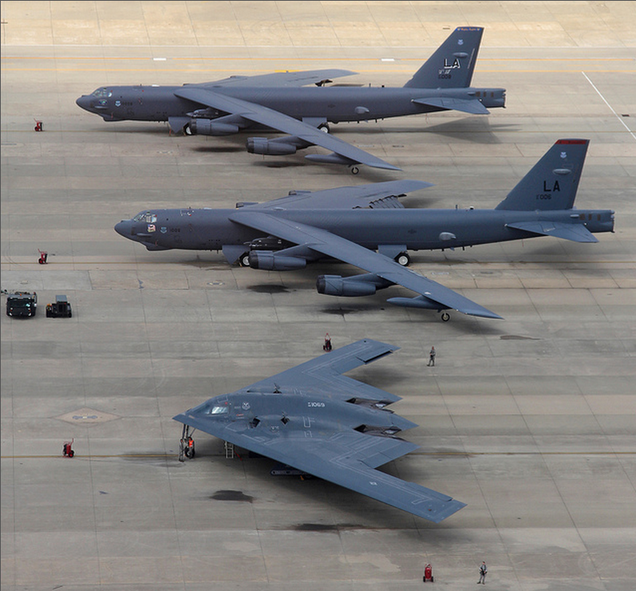
Sure, Northrop Grumman, Lockheed and Boeing – America's consolidated list of big combat aircraft suppliers – have diversified into multiple business spaces within the defense industry over the years, but still, those aircraft contracts are tough to beat when it comes to steady income for decades.
So a contract like the Joint Strike Fighter, or now the Long Range Strike Bomber (LRS-B), can make or break the company that wins and loses it, at least as their military aircraft division is concerned. Why? Because with new aircraft development times lasting multiple decades, and the aircraft's life cycle being stretched out many decades after that, the competition may not get a chance at another similar contract for half a century. By then, the guys who won the last contract will be far ahead in know-how, much of it gained on the DoD's dime, than the ruins of what was 'the competition' long ago. So today, as budgets are under heavy strain, super-sized defense programs that promise many billions (or in the case of the F-35, trillions) of dollars in revenue over their life span are seen as a lifeline to future relevance as much as just another piece of a company's portfolio.
The F-35 Problem
The F-35 in particular has shocked the defense industry into a new reality. Beyond its merits and failings, the F-35 aims to replace the majority of tactical fighters in the U.S. inventory with one type, sold by one contractor. Not only does this mean that there will be no future fighter aircraft competitions potentially for decades, but it also means all those sustainment and upgrade dollars will be migrating away from a diversified fleet supported by many manufacturers and right into the pockets of a single major contractor.
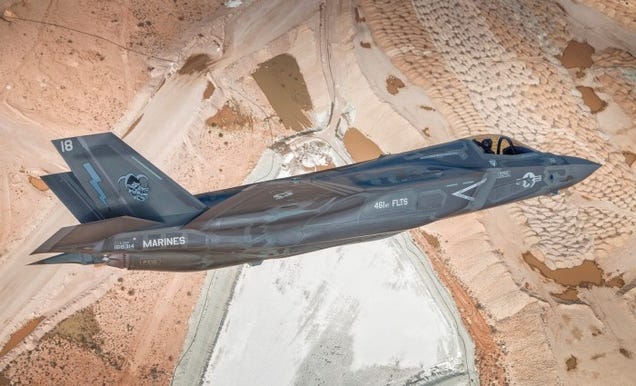
The very public lashing of the F-35 program and the numerous stories on its many faults have clearly widened who the defense contractors view as their constituency.
What results from all this is that the 'big three' military aerospace giants are not just in an all-or-nothing fight to win just a particular aircraft program, but for the ability to compete in the complex military aircraft space in the future. This means they are going to do what is necessary not just to win a contract, but to keep that contract solvent for the many years it takes for it to come to fruition and for the aircraft ordered to actually enter service in substantial numbers. For these manufacturers, getting both Congress and the public on your side is now an element of this 'total warfare' approach to winning market share for decades to come and possibly shuttering some of your historical competitors in the process.
Of course, this effort still starts with Congress. In 2014, Northrop Grumman spent $3.4M on Congressional donations. Both parties got a giant chunk, with Republicans receiving $2M and Democrats receiving $1.4M. Donations to individual politicians ranged from $62,000 to Dick Durbin (D-IL), the top beneficiary of Northrop Grumman donor war chest, on down, with the tenth largest recipient being Gerry Connolly (D-VA) with $12,750. Boeing was right there with Northrop Grumman's federal politician donations, handing out $3.6M in 2014, and Lockheed beat Boeing with a total just over $4M going to Washington politicians.
To say that Big Defense is buying Washington is of course true, and they also buy the Pentagon's people regularly, but other mega industries such as the automotive and energy sector are right there with them when it comes to lobbying and contributions. Keep in mind these figures do not include lobbying efforts, which dwarf direct contributions. Northrop Grumman spent $26M last year on lobbying efforts, while Lockheed spent a $21M and Boeing a cool $23M.
When it comes to Northrop Grumman spending hundreds of thousands, and possibly millions of dollars, on a slick ad showing America that they have another very exciting flying wing 'under the sheet' is really just another form of buying more influence in Washington as much as it is corporate branding. People elect politicians, and those politicians have to face their constituents. Seeing as defense dollars are now clearly on the table when it comes to budget battles in Washington, and seeing that the F-35, which has been the Pentagon's lightning rod (excuse the pun) for heated debate concerning over-spending on broken and bloated defense programs of questionable utility, is now too big to fail, the next big controversial weapons program that will take its place is the Long Range Strike Bomber.
The B-2 Problem
Stealth bombers are an economic sore spot for the USAF to begin with. The B-2 Spirit was once the apple of the USAF's eye. It, too, was developed in relative secrecy with much rumor and hype surrounding its unveiling. Then, a program that aimed at producing well over 100 new super-bombers, saw costs balloon as the geopolitical winds shifted. As a result, its production numbers were consecutively cut down, sending the program into what is now deemed a Pentagon death spiral; a feedback loop where a weapon is too expensive to buy because you don't buy enough of them and you don't buy enough of it because it is too expensive to buy.
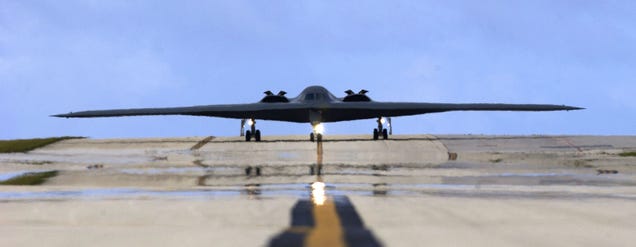
In the end, the $45B Advanced Technology Bomber project that took well over a decade to field ended up producing just a measly 21 airframes. The cost of each of those airframes, with the price of development amortized across the small fleet: About $2.2B each.
In other words, each B-2 cost close to same amount as the entire Wynn resort and casino in Las Vegas.
The failure of the B-2 to be produced in sane numbers is alive and well in the minds of the defense giants competing for the new bomber contract, and especially Northrop Grumman, who saw their crown jewel stealth bomber project be mutilated by Washington budgetary infighting and blunt cuts some 25 years ago. This new bomber, the LRS-B, like the B-2 program, aims to build around 100 units, with a cost of about $550M per aircraft. This is a number that historically seems unobtainable with some in the defense and procurement world calling it laughable. Even the B-2's fly-away cost, not including research and development costs, was around $700M per copy in 1997.
The USAF is pushing hard to keep that price of its new bomber at that $550M mark, knowing full well the B-2's cautionary fiscal tale. Some steps have been taken within the program from early on too limit the risk involved by using matured technologies that are already developed for the new bomber, as well as making it smaller than its B-2 progenitor. Still, it is questionable if these tactics alone can keep the LRS-B from overrunning cost projections and showing up as a bright red blip on Congress's budgetary radar.
The Pacific Problem
The geopolitical winds are shifting for the LRS-B in a similar way as they did on the B-2 over two decades ago. The Obama Administration and the DoD wanted to pivot its strategic focus to the vastness of the Pacific region and the major peer-state competitor that lives there: China. This pivot has been more like a stumble, with small, low-tech military engagements popping up around the globe and with the rapid rise of the ISIS overshadowing what was supposed to be the ending of the horrifically expensive wars in Iraq and Afghanistan. Now we are back doing what we have done for almost a decade and a half before — fighting men carrying AK-47s, RPGs and cell phones with twitter accounts . As a result of these developments, the whole idea of countering hordes of Chinese Super-Flanker fighters, overcoming anti-access capabilities and rapidly developing the air-sea battle concept seems like a comparatively low priority.
You simply do not need a high-end stealth bomber to fight black and camo clad jihadis driving around in Toyota Hilux trucks.
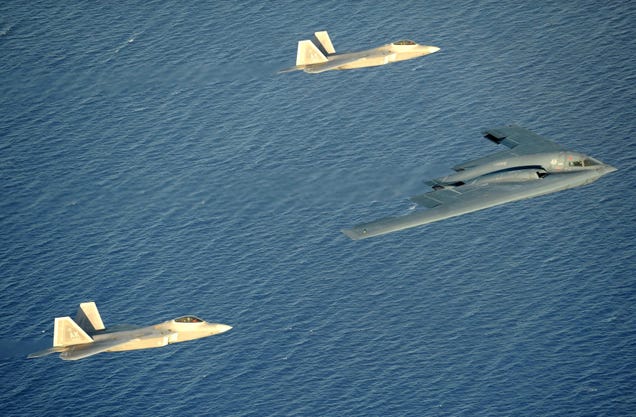
So this brings us back to the glitzy Northrop Grumman ad in question, and the big bucks they spent running it in strategic markets during the most expensive ad-rate television programming of the entire year.
People don't buy $550M bombers, nor does Northrop's heritage of building crazy looking flying wing bombers sell more product to American consumers. Sure, every company can use awareness and general brand marketing for recruitment and other purposes, but they don't have to buy Super Bowl airtime to get it. Additionally, general branding is clearly not the primary function of this very focused ad.
The fact that Northrop Grumman ponied up big bucks in the Washington DC and Dayton, Ohio markets to have their new ad run during the third quarter of the Super Bowl is telling in itself. The ad being played in DC doesn't need to be explained as we all know the eyes that will be watching it (including the President's), but placing it in Dayton as well does need further explanation. Dayton, Ohio is the home to Wright Patterson AFB, which happens to be home of Air Force Materiel Command, the heart of the USAF's procurement and contracting apparatus as well as its research and development arms. In other words, there are big influences on very big military procurement decisions emanating from Dayton, including the winner of the crucial LRS-B contract.
Oh, and guess what comes out the Monday after the Super Bowl? The $585 Billion defense budget in which the LRS-B program is almost certain to get a major boost.
Beyond these highly focused airings, the Northrop Grumman ad does more than just attempt to talk directly to big decision makers that may possibly lord of Northrop Grumman's big bomber future, it brings the public into the equation, and in a way, make them the customer.
The iPhone Solution

On broad public level an ad like this does is it starts building support and excitement for a program that may very well need every ounce of support it can get by thrusting it into the public's consciousness. The ad itself is more about progress than it is about capabilities, and Americans love progress right? They don't line up at the Apple store to buy the new iPhone because it's their job, they do it because they want to be a part of 'the next big step' in tech.
Think of it as the ultimate perversion of the Fear of Missing Out. The LRS-B, sitting under its flowing sheet, is shown as just that, the next big step in America's ability to build new, previously unrealized capabilities. It is America's next and highly rumored iPhone. It is a huge, anonymous bat-winged chunk of progress, a canvas for people to paint their own wonders on. A glimpse of what could be, or maybe even what is.
The LRS-B has had the luxury of living in the dark world for the better part of a decade, this includes having funds poured into its development with little scrutiny or oversight. Now, with its disclosure imminent, it will be flung on the bloody Congressional butcher block. Especially now that the 'too big to fail' F-35 is nearly past a point of no return. With the program's budget already highly questionable when it comes to size versus aim, once the menacing stealth bomber is uncloaked it will immediately draw fire, especially due to competing priorities.
Northrop Grumman does not spend big money on a Super Bowl quality ad for vanity, they do it as a first public shot in a possibly very protracted battle over the largest aircraft contract coming down the pipeline possibly for decades to come.
Considering the dollar figures at stake, with projections ranging from $55B to well over $100B just for the aircraft's acquisition and development alone, a high-end commercial that millions in the country will most likely see sometime over its running is just a drop in the bucket and in some ways a very smart tactical move. Being able to also take that same ad and strategically place it in front of decision makers eyes a massive added bonus.
The minds at Northrop Grumman know full well that once that sheet is ripped off their new stealth bomber it will be tossed into combat immediately, not high over the skies of an enemy nation, but in the halls of Congress and in the Oval Office of a new President.
Simply put, in the big scheme of things (as in many tens of billions of dollars big) spending big bucks on a high-end ad and running it accordingly is a minuscule price to pay to begin getting America interested in wanting to see what the hell is hiding under that sheet. It's like a keynote presentation and that sheet is basically the "Oh yeah, one more thing."
Northrop Grumman and their new pet super bomber may need every invested mind they can get in order to survive. The cost of losing that fight for a company with no KC-46 or F-35 to see them through could be catastrophic. At the very least, it would almost certainly put them out of the bomber business forever.
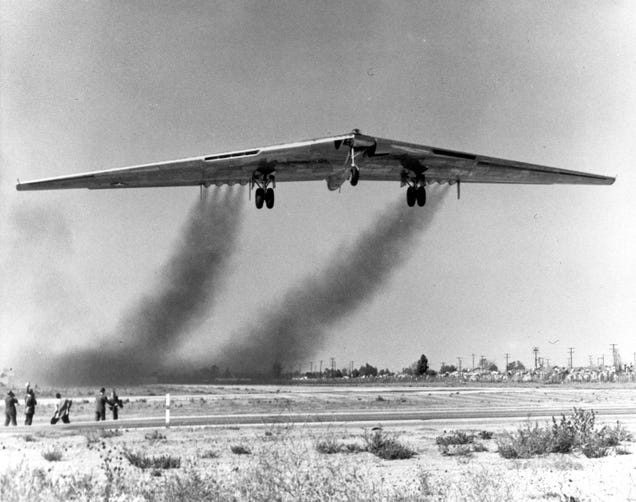
Tyler Rogoway is a defense journalist and photographer who maintains the website Foxtrot Alpha for Jalopnik.com You can reach Tyler with story ideas or direct comments regarding this or any other defense topic via the email address Tyler@Jalopnik.com

